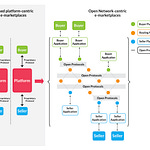Biopolitik: The Power of Four: Biomanufacturing and the Quad
— Saurabh Todi
A biological revolution is underway in global manufacturing. Products produced from genetic engineering and biomanufacturing techniques are replacing many chemical, industrial and farm-based products. According to a 2020 McKinsey report, the substitution of chemical products with biological alternatives through modern biotechnology has the potential to produce up to 60 per cent of the physical inputs required by the global economy. Similar modern biotechnology efforts are underway for milk, meat, pharmaceuticals, oils and numerous other industries. Individually, these industries are worth many billions or trillions of dollars. Combined, they make biotechnology one of the most economically lucrative emerging technologies.
However, beyond the obvious economic value, there is significant strategic and social value in modern biotechnologies. The products produced by modern biotechnology are or will be essential for producing food, energy, and health management. Those that control the IP and supply chains will potentially control key determinants of society’s technological progress. There are also numerous potential military applications for biotechnology that range from food security to new, lightweight polymers to understanding the potential of highly effective biological weapons (which are banned under international law).
Given the immense economic and strategic importance of these technologies, it is vital that countries do not place themselves in a vulnerable position. The Quad has sought to address this potential vulnerability by establishing a Critical and Emerging Technology Working Group that will monitor trends in critical and emerging technologies, such as synthetic biology, genome sequencing, and biomanufacturing, and also identify opportunities for cooperation within Quad.
China plans to establish its dominance in biomanufacturing as well. In a Chinese government document on building the bioeconomy, a central theme was biomanufacturing at scale, including plastics, oils and agri-food technology. The ASPI critical technology tracker shows that academics in China publish more of the top 10% of most-cited academic papers for biomanufacturing than in any other country. Given China’s track record in establishing a lead in several emerging technologies, There’s good reason to believe China will build its biomanufacturing base faster than its competitors.
To capitalise on the economic potential of the biomanufacturing industry and address potential supply chain vulnerabilities, we recommended that Quad countries establish a biomanufacturing hub in India. The proposed Quad-led hub would invest in three main areas: strengthening physical infrastructure, bolstering workforce capabilities, and identifying opportunities for collaboration.
Researchers at the Takshashila Institution, Saurabh Todi and Shambhavi Naik, along with researchers at Australian National University, Dirk van der Kley and Daniel Pavlich, have explored this idea in detail in a recently published as a Discussion Document. The recommendation was published as op-eds in publications like ASPI Strategist.
Matsyanyaaya: Preparing for the quantum leap
— Rijesh Panicker
The National Mission for Quantum Technologies and Applications (NM-QTA) seeks to strengthen India’s research and development ecosystem in various quantum technologies like quantum communications, quantum computing, quantum sensing and quantum materials. It will also look to build 50-100 qubit quantum computers within the next 5-8 years.
With an outlay of ₹6,000 crores over the next eight years, NM-QTA represents a significant step forward from the Quantum Enabled Science and Technology (QueST) research program, funded by the Department of Science and Technology (DST) for ₹80 crore.
India has also sought international collaboration in this area. Among these is a partnership between the National Science Foundation in the US and Indian science agencies as part of the US-India Initiative on Critical and Emerging Technologies (iCET) in several areas, including quantum technologies, an Indo-US quantum coordination mechanism to facilitate research and collaboration, and an agreement with Finland, which includes setting up virtual quantum centres at three institutes in collaboration with Finnish academia.
Three key factors explain this acceleration in investment in quantum technologies.
First, quantum technologies are disruptive in their positive and negative impact. Quantum computers use quantum bits (qubits) to perform calculations based on quantum mechanical principles, allowing them to solve certain problems exponentially faster than traditional computers, which use classical bits (0 or 1) for computation. This is because qubits can exist in multiple states simultaneously (both 0 and 1), enabling quantum computers to perform many calculations at once, whereas classical bits can only exist in one state at a time. In areas such as material sciences and chemistry, quantum computers could prove groundbreaking, helping develop new and innovative molecules and materials at a rate faster than ever. Similarly, quantum secure communications significantly improve our cyber security and threat-detection capabilities.
Conversely, quantum computers above a certain size (measured in qubits) can easily break the encryption algorithms that secure most of our data today. Any actor – either state or non-state – that captures financial, military and infrastructure-related data critical to our national interest only needs to hold onto it until quantum computers are of a certain capability to be able to decrypt the data. This leaves us vulnerable to the inevitable progress in quantum computing.
The second factor is the global geopolitical environment. China and the US are battling for strategic advantage, especially in emerging technologies. Countries will protect their core technology, push for their standards and maintain close control over their allied supply chains. In quantum, for example, China has chosen to push its path forward. Similarly, India should not simply depend on its allies. In the 1990s, Russia was not allowed to fully transfer cryogenic engine technology to the Indian Space Research Organization (ISRO) due to the Missile Technology Control Regime (MTCR) that existed. Ultimately, ISRO developed its own indigenous cryogenic engine in 2014. We must avoid something similar happening to us in the quantum space.
We can see this playing out in the area of quantum communications, where countries like China, Japan, and South Korea have demonstrated their own quantum secure communication networks. The standards for quantum communications are still being developed, and whoever influences these standards gains an advantage.
In the quantum computing space, there are multiple methods to build a quantum computing core, each with its strengths and weaknesses. No one technology has a clear path to a viable, large-scale quantum computer. The winner of this race will undoubtedly have a long-term advantage over its competitors.
A third reason to consider is our relative weakness in high-tech research and development (R&D). India has spent about 0.7% of its GDP on R&D annually over the last decade. In particular, the government accounts for over 55% of all R&D investments in India. In contrast, China spends about 2.1% and the US 3% of GDP on research, both with high levels of private sector participation. Compare the nearly $1.2 billion investment in quantum computing just in 2022 by the private sector in the US with the National Quantum Mission (NM-QTA) $730 million budget over the next eight years.
A recent study by the Australian Strategic Policy Institute (ASPI) comparing quantum investments across countries shows India lagging the US and China, both in terms of trained manpower and in terms of research conducted (as measured by highly cited papers; probably a biased metric for quality of research, but a metric nonetheless).
We must choose where to be “Atmanirbhar” and where we want to depend on others. India must decide where to wait and watch and where to go now. In some areas, like quantum communications, we have already decided to go, which is the right move.
As a matter of good strategy, India must identify those parts of the quantum technology space where we need to maintain technological independence and diversity. A considered allocation of resources to build infrastructure, fund and encourage research, train manpower, and participate in and influence global standards is a great path forward.
Antariksh Matters: China’s secretive space plane
— Aditya Ramanathan
China’s enigmatic space plane landed horizontally on Earth on May 8 after 276 days in orbit, according to the state-owned China Aerospace Science and Technology Corporation (CASC).
The uncrewed reusable vehicle was launched in August 2022 on a Long March 2F rocket. This was the second such mission involving a reusable vehicle. In September 2020, a reusable craft was put into orbit for just two days, during which time it deployed two small objects into orbit.
The recently concluded mission also involved putting a payload into orbit. On October 31, 2022, about three months after its launch, the craft deployed an object that may have been a small companion satellite meant to monitor the craft. Chinese crewed craft have released similar monitoring satellites in the past.
The space situational awareness company Leolabs tracked the Chinese craft and has concluded that it docked with an ‘Object J’ (most likely the same monitoring satellite) two or three times. Leolabs also concluded that the space plane had an independent capacity to manoeuvre and propel itself while in orbit.
Everyone Likes Spaceplanes
States have been experimenting with space planes for decades. The erstwhile US Space Shuttle was the most prominent example of a reusable crewed vehicle that was launched vertically and landed horizontally.
However, most ongoing space plane programmes are uncrewed, and some have explicit military roles. For instance, Boeing is developing the uncrewed X-37B Orbital Test Vehicle (OTV), which is operated by the US Space Force. The X-37B is already considerably ahead of China’s space plane programme, having completed six missions, the last of which was in orbit for 908 days. Like China’s space planes, the X-37B is capable of placing objects in orbit, such as the experimental FalconSAT-8 for the US Air Force.
Other countries have been looking to develop space planes of their own. India took a modest first step in this direction in April when it dropped a prototype 6.5 metre-long uncrewed space plane called the Reusable Launch Vehicle from a helicopter and landed it.
Private companies are also attempting to develop space planes of their own. The most prominent examples include Sierra Space’s Dream Chaser, which could include both crewed and uncrewed variants, as well as the Dawn Aerospace’s Mk-II Aurora. While these projects are still in their early stages, there could be strong commercial incentives for investing in them.
What Are They Good For?
The most obvious reason to invest in space planes is to reduce the cost of access to space: the dream of reusable craft being able to insert payloads into orbit quickly and cheaply is an old one. This is the stated reason for India’s own RLV and the driving force for space plane development by private companies.
The direct military utility of space planes is unclear at this stage. The US X-37B is operated by the Space Delta 9 unit of the Space Force, which is, among other things, responsible for ‘orbital warfare’. It is possible that future space planes could deploy a range of small payloads that can conduct space situational awareness (SSA) missions, carry out rendezvous and proximity operations (RPO), or possibly use directed energy to dazzle or blind other orbital craft. However, the most likely military utility for space planes today is their ability to act as test beds to other technologies, such as autonomous manoeuvring in space and hypersonic capabilities. For now, at least, space planes are not harbingers of a new era of space warfare.
Our Reading Menu
[Report] China-Russia Space Cooperation: The Strategic, Military, Diplomatic, and Economic Implications of a Growing Relationship.
[Op-ed] Globalising India's DPI for a Common Digital Future by Bharath Reddy and Saurabh Todi.
[Blog] This time, it feels different by Kailash Nadh.











Share this post